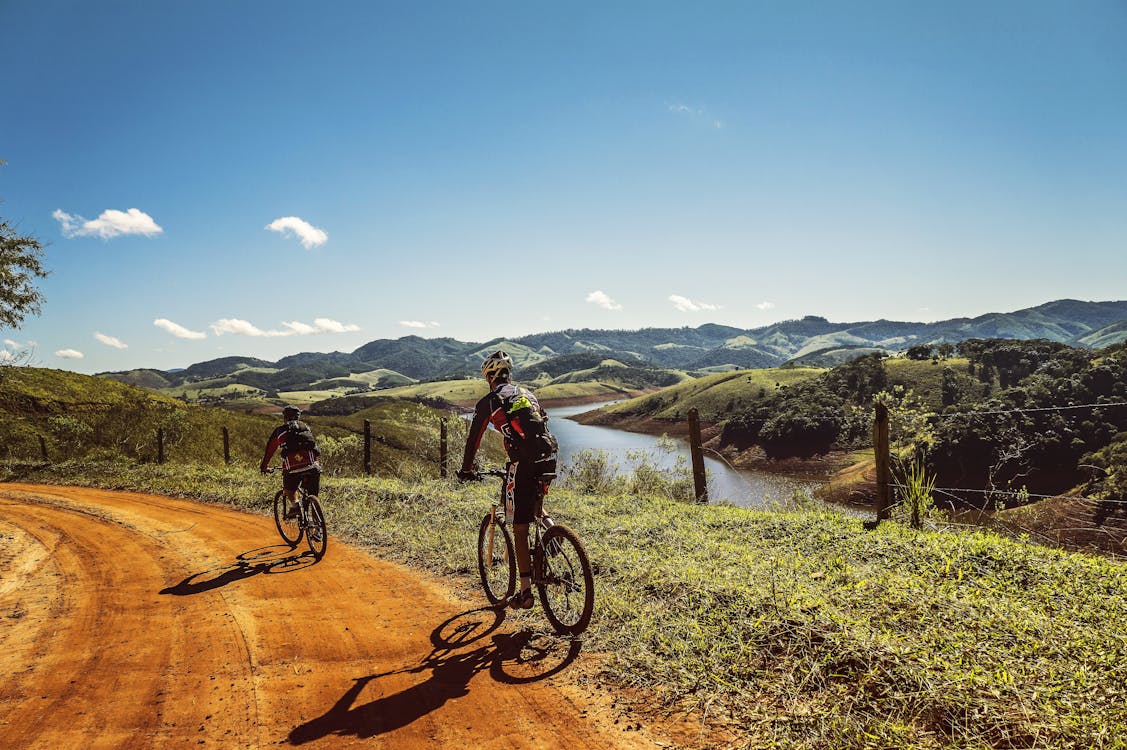The Ultimate Long Ride Guide: Preparing for and Enjoying Extended Bike Trips
Introduction:
Long bike rides offer a chance to push personal limits, enjoy breathtaking scenery, and experience the thrill of the open road. However, unlike a quick spin around the block, a long-distance bike ride requires thoughtful preparation, planning, and strategy to make it both enjoyable and manageable.
In this guide, we’ll explore everything you need to know to prepare for a successful long ride. From physical conditioning and gear essentials to nutrition tips and mental strategies, here’s how to get ready for—and thoroughly enjoy—a long-distance biking adventure.
1. Getting Your Body Ready: Physical Conditioning
Long rides are physically demanding, so it’s important to prepare your body for the miles ahead. Here are key conditioning tips to help build strength and endurance:
- Build Up Gradually: Start by increasing your ride distance gradually. Aim to increase your weekly distance by no more than 10-20% to avoid overtraining.
- Focus on Endurance: Long, steady rides will improve endurance. Include at least one long ride each week that’s close to your target distance to build stamina.
- Incorporate Cross-Training: Activities like swimming, running, or strength training can improve your overall fitness and support muscle recovery.
- Stay Flexible: Incorporate stretching or yoga to maintain flexibility, prevent injury, and improve posture on the bike.
2. Bike Prep: Essential Gear for Long Rides
Your bike needs to be as prepared as you are for a long ride. Regular maintenance and quality gear are key to comfort and safety on the road:
- Bike Check-Up: Have a professional mechanic inspect your bike, paying attention to tires, brakes, chain, and gears to ensure everything is in good working order.
- Saddle Comfort: Saddle comfort is crucial for long rides. Invest in a seat that suits your riding style and anatomy, and wear padded cycling shorts to reduce pressure.
- Hydration System: A hydration pack or multiple water bottle cages are essential. Staying hydrated will help maintain energy levels and prevent cramps.
- Essential Tools: Pack a repair kit with a spare tube, tire levers, mini pump, multi-tool, and patches. Knowing basic repairs will give you peace of mind on the road.
3. Planning Your Route: Navigation and Safety
A successful long ride involves thorough route planning. Having a plan helps ensure safety, maximize enjoyment, and minimize the chance of getting lost.
- Choose Your Route: Consider distance, terrain, and elevation gain when planning your route. Websites like Strava or Komoot can help you map out a suitable path.
- Know Rest Stops: Plan stops for food, water, and rest. It’s helpful to know where you can stop to refill bottles or grab a snack along the way.
- Use Navigation Tools: A GPS device, smartphone app, or even printed map can keep you on track. If using your phone, be sure to carry a portable charger.
- Inform Others: Always let someone know your planned route and estimated return time, especially if riding solo.
4. Fueling Up: Nutrition for Long Rides
Long rides require proper fueling before, during, and after the ride to maintain energy levels and optimize recovery:
- Pre-Ride Meal: Have a balanced meal with complex carbs, protein, and healthy fats 2-3 hours before your ride. This provides sustained energy without feeling overly full.
- On-the-Go Snacks: Pack easy-to-digest, energy-dense snacks like energy bars, dried fruit, and nuts. Aim to eat something small every hour to keep your energy up.
- Hydrate Continuously: Drink small amounts frequently. For longer rides, consider electrolyte drinks to replace salts lost through sweat.
- Post-Ride Recovery: A post-ride meal with protein and carbs aids recovery. Good options include a protein shake, yogurt with granola, or a balanced sandwich.
5. Mindset and Mental Endurance
A long ride is as much a mental challenge as a physical one. Here are some strategies to keep yourself focused, motivated, and enjoying the journey:
- Set Small Goals: Breaking the ride into sections can make it feel more manageable. Focus on reaching the next checkpoint rather than thinking about the full distance.
- Visualize Success: Visualize finishing the ride and the sense of accomplishment that comes with it. Positive thinking can boost endurance and push you through tough moments.
- Stay in the Moment: Enjoy the scenery, the rhythm of the ride, and the sense of freedom. Being present can make the ride more fulfilling and enjoyable.
- Manage Discomfort: Long rides inevitably come with discomfort. Accept that it’s part of the journey, and stay focused on why you’re riding and what you hope to achieve.
6. Dressing for Success: Apparel Tips for Long Rides
Comfortable, weather-appropriate apparel will make a world of difference on a long ride:
- Layer Up: Layering allows you to adapt to changing weather conditions. A moisture-wicking base layer, a jersey, and a lightweight jacket should cover most weather scenarios.
- Weather Protection: For rides in unpredictable weather, pack a windproof or waterproof jacket. Gloves, arm warmers, and leg warmers can also help you adapt on the go.
- Comfort-First Footwear: Invest in cycling shoes that support your feet and fit well. Look for padded socks to prevent blisters and keep your feet comfortable.
7. Know When to Rest: Recognizing and Respecting Your Limits
Listening to your body is essential for avoiding injury and burnout on long rides:
- Take Regular Breaks: Schedule breaks to refuel, rehydrate, and stretch. Brief stops also help reduce muscle stiffness and mental fatigue.
- Listen to Pain Signals: Pain is a signal to stop and assess. Sharp or sudden pain means it’s time to take a break or adjust your position. Ignoring discomfort can lead to injury.
- Avoid Overexertion: Long rides are about pacing. Start at a steady pace and conserve energy for later in the ride. If you’re using a heart rate monitor, aim to stay within your endurance zone.
8. Staying Safe: Traffic Awareness and Road Etiquette
When sharing the road, safety and awareness are essential. Here are some tips to keep in mind:
- Stay Visible: Wear bright clothing and use front and rear lights, even during the day. Visibility reduces accidents, especially on busy roads.
- Communicate with Hand Signals: Signal turns and stops to drivers and fellow cyclists. Clear communication helps prevent misunderstandings.
- Be Aware of Surroundings: Constantly scan your environment for potential hazards, such as potholes, parked cars, or pedestrians.
- Ride Predictably: Avoid sudden moves or lane changes, and follow traffic rules as you would in a vehicle.
Conclusion: Embrace the Adventure
Preparing for a long-distance ride requires attention to detail, from physical conditioning to gear and nutrition. But the reward of completing a long ride, whether it’s a weekend adventure or an all-day journey, makes the effort worthwhile. Long rides are more than just exercise—they’re an opportunity to experience freedom, enjoy nature, and push personal boundaries.
So get ready, gear up, and enjoy the adventure that awaits you on the road or trail. Happy riding!



